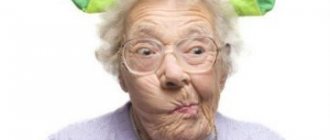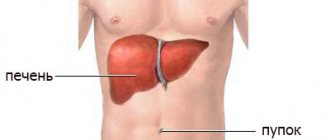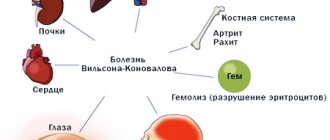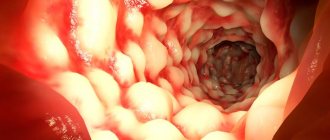Dementia is a syndrome characterized by memory loss combined with the inability to do work, take care of oneself, perform simple activities, and personality degradation. The disease is typical for older people, but young people also suffer from it. The cause of the development of dementia may be age-related changes in the body, changes in the nerve cells of the cerebral cortex due to various pathological processes that lead to the death of neurons.
The effort required to climb an inaccessible peak is not unlike the daily challenges faced by caregivers of people with Alzheimer's disease. In both cases, you need to understand the limits of your own strength, be able to ask for help, and patiently walk step by step along a very difficult road every day.
Alan Arnett
Reasons for development
In some cases, it develops according to an independent algorithm: for example, with Alzheimer's syndrome, Pick's disease or accumulation of Lewy bodies in cortical neurons. There are also a number of factors that cause complications:
- atherosclerotic plaques in the vessels of the head;
- stroke;
- hypertensive crisis;
- central nervous system tumors;
- infectious (AIDS, meningitis, etc.);
- mechanical traumatic brain injuries, concussions;
- bad habits – alcohol abuse, drug addiction;
- severe autoimmune spectrum problems, such as lupus erythematosus or multiple sclerosis.
Subcortical arteriosclerotic encephalopathy
This form of vascular encephalopathy is also called Binswanger disease, subacute arteriosclerotic Binswanger encephalopathy, chronic progressive subcortical encephalopathy, arteriosclerotic leukoencephalopathy.
In contrast to atherosclerotic encephalopathy, in 98% of cases its cause is long-term arterial hypertension with sharp fluctuations and disturbances in the daily periodicity of blood pressure in the absence of changes in the main arteries of the head. Other possible but rare causes are amyloid angiopathy and hereditary cerebral autosomal dominant angiopathy with subcortical infarcts and leukoencephalopathy, which manifest at a relatively young age.
The morphological basis is the defeat of small perforating arteries of the white matter with a diameter of up to 150 microns with hypertrophy, hyalinosis and sclerosis of the walls, with narrowing or complete closure of the lumen. There are signs of a combination of diffuse damage to the white matter (spongiosis, foci of incomplete necrosis, myelin disintegration, foci of encephalolysis) with small lacunar infarcts in the white matter, subcortical ganglia and pons.
The density of white matter decreases, especially around the anterior and, less commonly, posterior horns of the lateral ventricles—the phenomenon of “leukoaraosis.” Multiple small post-infarction cysts are formed after lacunar (mostly clinically silent) infarctions in the white matter and subcortical nodes. Enlargement of the ventricles of the brain is also characteristic. The clinical picture is dominated by progressive cognitive impairment, impaired walking function and pelvic disorders. In the end, dementia and complete helplessness of the patient develop.
Classification
Depending on the area affected, there are 4 types of dementia; Dementia is accompanied by various symptoms. More details in the table below:
| Name | Damage | Peculiarities |
| Cortical | Cerebral cortex | Characteristic of Alzheimer's disease, Pick's disease, as well as a tendency to alcoholism |
| Subcortical | Subcortical structures | Accompanied by neurological disorders - trembling hands and feet, cramps, cramped muscles, uneven gait. Appears in Parkinson's and Huntington's disorders, as well as in hemorrhages. |
| Cortical-subcortical | Damage to the cortex and segments below it | More often observed in pathologies of the vascular system |
| Multifocal | Formation of necrotic zones in different areas of the central nervous system | Multiple neurological phenomena, the nature of which directly depends on the location of damage in the central nervous system |
Manifestations in old people
The most commonly manifested syndrome is senile senile dementia - a demented disease that occurs in the elderly as a result of Parkinson's disease, Alzheimer's disorders, as a result of alcohol abuse, mechanical damage and other reasons. According to statistics, more than 80% of cases are diagnosed in people over 65-70 years of age. As a rule, a person has problems with memory, the functions of oral and written speech are impaired, irritability and uncontrolled aggression appear. In the later stages, there are hallucinations, delusions, and impaired motor skills.
See also: How to recognize Parkinson's disease at an early stage: first symptoms and signs
In children
At a younger age, the problem can be caused by a genetic shift, traumatic brain injury, or viral infection. In early childhood, the patient loses acquired skills and abilities, and the child experiences difficulty constructing sentences. If the pathology arose while still in school, there may be a deterioration in performance, physical and mental activity decreases, even if speech is not affected. In high school and during adolescence, dementia syndrome sometimes manifests itself in difficulties with memorization, unclear speech, the child begins to get tired very quickly and cannot concentrate on studies.
Drugs
After a comprehensive examination in a hospital, further treatment at home is possible. Patients are prescribed drugs to treat the underlying disease. The basic treatments for most forms of dementia are:
- inhibitors : (Galantamine, Donepizil), their action is based on the accumulation of acetylcholine in the neurons of the brain, a substance that slows down degenerative processes;
- modulators : (Akatinol, Memantine), these drugs effectively reduce the production of glutamate, a substance that negatively affects brain cells and destroys them;
- antipsychotic , sedatives and antidepressants, their use is justified in case of pronounced changes in the emotional background, the appearance of aggression, anxiety, fears, mania.
- neuroprotectors (Somazin, Cerebrolysin, Cortexin), which improve the trophism of brain tissue, their nutrition and oxygen supply, are effective in vascular pathologies.
With dementia, it is important to begin adequate therapy ; this will allow patients to retain independent skills in everyday life and mental functions longer, and in some forms, restore many lost abilities.
How many years patients receiving treatment live with this diagnosis depends on the form and severity of the disease.
In mild forms, with normal functioning of the cardiovascular system, for many years.
In severe cases, with loss of motor activity, patients die from concomitant complications (sepsis, cardiac, pulmonary or renal failure).
Clinical variants and causes of dementia
Classification of the clinical development and course of the disease is possible according to several types. They identify a problem that occurred against the background of alcohol addiction, vascular abnormalities, as well as Alzheimer’s and Lewy bodies.
Alcoholic
The main impetus for the appearance of disorders is long-term abuse of alcohol-containing drinks (from 10-12 years and longer). It is characterized by serious personal changes, including social and moral degradation, loss of moral values, and aggressiveness. In addition, the patient usually exhibits severe absent-mindedness and experiences pathologies of thinking.
If you completely stop drinking alcohol, there is a chance of partial restoration of the functionality of the central nervous system and brain, but this is rare. When the craving for the bottle is stronger than willpower, and the disease of dementia progresses. Death is often caused by failure of internal organs, an accident or a criminal factor.
Vascular
This type develops due to the death of brain cells due to circulatory failure or blockage of blood flow. These phenomena, in turn, are most often caused by a stroke or chronic dysfunction. Usually, the immediate death of a large number of cells provokes the accelerated development of the disease. The intensity of intellectual degradation directly depends on the size of the affected area and its location.
Alzheimer's type dementia
The symptoms of such a disorder are short-term memory impairments that progress over time, and the person ceases to understand that not everything is okay with his condition. In the absence of therapy, the patient begins to not recognize relatives and friends, does not remember the events of the current day, while memories, for example, from childhood seem more real to him. Irritability and pickiness towards others appear, which can coexist with naivety and gullibility towards unfamiliar individuals.
For pensioners
Elderly people most often experience this disease. Elderly patients with dementia are those whose mental and physical activity is rapidly declining, but they can live like this for several decades. Depending on the severity, their behavioral abnormalities range from mild to severe (speech disturbances, memory lapses, unstable coordination, violent or inappropriate behavior). It is not difficult to understand that relatives living in the same area as the patient suffer the most, and in addition, at a later stage, the patient can be dangerous to others. This becomes a good reason to place a person in a private boarding house for the elderly with dementia.
How to communicate with a patient
Regardless of the cause of dementia, irreversible changes occur in the cerebral cortex that radically change a person’s life.
He loses the ability to remember and understand new information, recognize his children and other loved ones, and think logically. Over time, life skills are impaired, and the sick person cannot be left alone. He loses his personality traits. As life expectancy increases, so does the number of people suffering from memory impairment. A diagnosis of dementia is a serious shock for anyone. The disease ruins all plans and limits contacts with other people. The person begins to experience difficulties in communication. He cannot remember new information or complete a sentence. At the same time, another life begins for the person who takes care of the patient. Psychologists at the Yusupov Hospital advise people caring for people with dementia to acquire new communication skills:
- Avoid raising your voice;
- Speak slowly, smoothly;
- To make sure that you managed to attract attention to the information, you should look into the patient’s eyes during a conversation and touch him carefully;
- Be the first to take the initiative to talk, since as dementia progresses, it is more difficult for the patient to start a conversation;
- Formulate questions so that the respondent can give an unambiguous answer: I don’t know, no, yes;
- If the patient does not understand what he is being asked about, the thought needs to be formulated differently;
- It should be noted that patients with dementia remember the past better than the future;
- Try to talk more often with the patient about the past, as this calms him down;
- If the patient stops responding to the phrases you say, you do not need to talk about him in his presence in the third person, as this may be perceived as humiliation.
Symptoms and signs of dementia
Accompanied by the following manifestations:
- Cognitive changes: logic disorders, decreased intelligence, severe forgetfulness.
- Problems with fine motor skills and coordination of movements, which makes basic actions, such as closing a door or washing dishes, impossible.
- High absent-mindedness.
- Fatigue sets in quickly.
- Reluctance to learn new skills.
- Sloppiness in appearance.
- Deviations of a sexual nature, for example, increased libido, uncontrolled arousal.
- Disorientation in space.
- Difficulties with written and oral speech.
- Sudden mood swings, aggression, whims.
Dementia syndrome of various origins is especially common, i.e. mixed: sometimes occurs under the influence of several factors, for example, dependence on strong drinks coupled with vascular failures, as a result of fractures and hematomas. According to statistics, this type of disorder occurs in almost 50% of all cases.
Leave a request for selection of a boarding house
for an elderly person with dementia
From chronic fatigue to emotional burnout
Life in the modern world is a marathon of psycho-emotional overload. And also problems with physical health, a series of infections, primarily viral ones, which are not recognized. Cytomegalovirus, herpetic, adenovirus... The result is chronic fatigue syndrome. Best case scenario. Because chronic unresolved distress leads to a more severe syndrome - emotional burnout. Whether you are overcome by oppressive fatigue, emotional devastation or oversaturation, it doesn’t matter. And also memory and attention disorders, anxiety depressive disorders, aggressive reactions, outbursts of anger, decreased professional achievements with severe feelings of loss of competence and success in one’s activities. If these are all modalities of the most important (cognitive) function, what do you think of this function? It's worth thinking about.
Causes of the appearance and development of the disease
A one-time cerebrovascular lesion of the brain is the main impetus for irreversible changes in the cortex. Blood circulation slows down or stops. Cells die, which causes complete personal degradation. In addition, the problem may appear as a consequence of traumatic brain injury, alcoholism, drug addiction, or ischemic stroke. It often occurs against the background of Parkinson’s, Pick’s, Huntington’s and other pathologies.
Multi-infarction condition
The cause of the multi-infarction condition, as well as subcortical arteriosclerotic encephalopathy, in most cases is arterial hypertension. Much less commonly, the cause is microembolization from thrombi of the left atrium (with atrial fibrillation) and disintegrating atherosclerotic plaques, as well as narrowing of the lumen of intracerebral arteries as a result of atherosclerotic stenosis, angiopathy and coagulopathy against the background of antiphospholipid syndrome, vasculitis, erythremia at a young age.
The morphological basis is multiple, predominantly lacunar, small infarctions with arteriosclerosis of vessels with a diameter of up to 500 microns in the white matter, subcortical nodes, internal capsule, and pons. The clinical picture is dominated by cognitive impairment, rarely reaching the level of dementia, pseudobulbar, subcortical, cerebellar syndromes, and transient paresis of the limbs. In subcortical arteriosclerotic encephalopathy, clinical symptoms develop gradually, and in a multi-infarction state, they develop stepwise, corresponding to microstrokes that develop sequentially over time.
Stages
It proceeds quite quickly, each stage has its own symptoms. The sooner efforts are made, the greater the chance that personality degradation will be slowed down.
So what is this “diagnosis” of early dementia?
At the initial stage, the patient instantly forgets everything, begins to orientate himself worse in space, and sometimes suffers from insomnia. Very often the patient appears apathetic. Gradually, he has difficulties understanding the words of his interlocutor, selecting words to express thoughts, and the ability to self-service decreases. Changes in behavior may also begin, hysteria, a tendency to whims, and mood swings may appear.
Middle stage
This stage is also called the intermediate stage. A person loses orientation in space, stops responding to treatment, is unable to take care of himself, forgets the names of relatives and acquaintances, and large fragments fall out of memory. It is important not to leave the person in your care alone, as they may unknowingly cause harm to themselves or others.
Late
Profound dementia is characterized by complete loss of mobility, urinary and fecal incontinence, and the inability to adequately perceive reality. Often the patient at this stage suffers from delusions, hallucinations, and develops various manias and fears.
Difficulties of care
Destructive processes in the brain lead to a deterioration in the individual’s ability to recognize the disease and adequately respond to the symptoms of the disease. As the disease progresses, the ability to communicate to others about painful problems is lost.
The task of others becomes timely recognition of signs of dementia, which are not recognized by the patient and are often not obvious.
What needs does the patient have?
The first stages of dementia are often invisible to others and are attributed to the natural processes of aging. Grouchiness, touchiness, accusations of stealing things or other imaginary sins are not associated with the disease.
Often, loved ones realize it when a person can no longer hold a fork or wash himself. This is due to the fact that skills are not lost suddenly, but gradually, over 4-10 years.
It is difficult for relatives to recognize that the patient is being tormented:
- boredom;
- loneliness;
- depression.
But those around you should be able to recognize these conditions, since they increase brain destruction and contribute to the transition of the disease to a more severe stage. Stress, if left unnoticed, provokes an increase in dementia and the appearance of somatic diseases.
In turn, dementia worsens the prognosis of somatic diseases. Due to the inability to recognize pain and communicate their problems, patients develop acute medical problems:
- urinary tract infections;
- pneumonia;
- dehydration;
- constipation.
The patient is not able to report that he is experiencing pain, insomnia, fear of death, wants to empty his bowels or bladder, and is burdened by a purposeless existence.
How to meet the patient's needs
When caring for someone with severe dementia, those around them may face communication challenges. The ward may show aggression, reluctance to make contact, and deny the need for care.
The need for help from loved ones increases as the disease progresses. If at the beginning of the disease a person is able to realize that he is sick, then in the advanced stage of increasing dementia he loses a critical attitude towards himself and his condition.
To improve the effectiveness of care for patients with dementia in practice, it is necessary to:
- Achieve and maintain the highest possible level of independent existence.
- Reduce the severity and frequency of neuropsychiatric symptoms.
- Replenish the knowledge necessary to care for the ward.
Those close to you should understand when the patient is experiencing boredom, pain or loneliness. At the stage of early dementia, the patient is still able to talk about his feelings, but with severe dementia, the patient’s well-being largely depends on the ability of close relatives to recognize the patient’s condition.
For all types of dementia it is necessary:
- control blood sugar and cholesterol to maintain blood flow to the brain;
- measure blood pressure to prevent micro-strokes;
- maintain normal body weight, avoiding obesity or exhaustion.
People with dementia face many different challenges as the disease progresses. Increasing difficulties are caused by neurodegenerative processes in the brain.
It is impossible to stop the destruction of the nervous tissue of the brain, but it is possible to slow down this process and provide a decent existence for a loved one who had to face this insidious disease.
Clinical trajectory of dementia
Diagnostics
During diagnostic procedures, the doctor pays special attention to the following factors of the disorder:
- Signs of memory impairment.
- The presence of organic deviations, including problems with abstract thinking, decreased criticality of perception, syndrome 3A (aphasia, apraxia, agnosia), personal negative transformations.
- Disruptions in social interactions.
- No delirium affecting consciousness.
- Organic defects.
Only on the basis of the clinical picture and examination in psychology is a disappointing verdict given. After this, the doctor must prescribe therapy based on the patient’s condition at the time of treatment.
Atherosclerotic encephalopathy
The reason follows from the name. Its morphological basis is predominantly superficial (granular atrophy of the cortex) foci of incomplete necrosis and small infarctions. Small and medium deep cortical-subcortical infarctions are possible. The clinical picture consists of a moderate decrease in cognitive functions, rarely reaching the level of dementia, with a predominance of moderately expressed focal disturbances of cortical functions (aphasia, alexia, agraphia, acalculia, apraxia, spatial agnosia).
Experts' forecasts
To do this, it is necessary to determine what caused the disease and the diagnosis of deep dementia; we will tell you what it is. For example, if it began due to a traumatic brain injury, hematoma or neoplasm, the process will not progress. However, it may happen that the situation gets worse and the procedures may only delay the process.
Mental disorders
At a later stage, paranoid delusions appear. The patient begins to feel that their loved ones are trying to kill them, take possession of their property, etc. Sometimes patients experience serious speech disorders with paraphasia, a desire for vagrancy, sexual preoccupation, and indiscriminate taste habits. Pointless actions appear, such as constantly moving things from one place to another.
Senile dementia with Lewy bodies
It is characterized by frequent fainting, arrhythmia, urinary retention, a tendency to constipation, and orthostatic hypotension. Recovery is carried out according to a similar scheme as in the case of the condition associated with Alzheimer's syndrome.
Symptomatic therapy
Currently, doctors do not know any medicines that could be used to cure a patient of dementia. Drug therapy is aimed at reducing the severity of symptoms of the disease and inhibiting the progression of dementia. Neurologists at the Yusupov Hospital adhere to the following priority areas for providing specialized medical care to patients with dementia:
- Identification of early symptoms of dementia at the preclinical stage of the disease, allowing for effective specific therapy to begin as early as possible;
- Determination of symptoms of mental health disorders, correction of behavioral reactions;
- Improving the patient’s activity, physical health and mental abilities;
- Providing complete information about the features of the clinical picture of various types of dementia to people who care for the patient.
Neurologists begin drug therapy for dementia by informing the patient about the disease and its symptoms. Doctors at the neurology clinic individually select for each patient pharmacological agents that are most effective for a specific clinical case of the disease. Complex therapy is carried out aimed at increasing activity, optimizing cognitive abilities, and improving the patient’s physical health.
At the same time, doctors at the neurology clinic identify and treat diseases that cause dementia, provide caregivers with information about the patient’s health status, and provide long-term psychological support. Doctors also give recommendations on adapting the environment for the patient, develop instructions for daily care, and adherence to the daily routine. Rehabilitation clinic specialists create a set of rehabilitation measures.
Make an appointment
Features of rehabilitation
Pharmacological agents are necessary to stimulate the nutrition of brain tissue and oxygen enrichment. Also, specialists often prescribe medications to eliminate the causes of the pathology. However, in psychotherapy the ways of dealing with this scourge are different. There, treatment for dementia includes the following methods:
- Art therapy.
- Musical.
- Animation impact.
- Supportive.
- Psychocorrection.
Who is susceptible and how to avoid it
Scientists have proven the following: a low degree of literacy, limited horizons, and lack of interests only fuel diseases. Educated, diversified people who have hobbies suffer from the syndrome less often. Therefore, it is necessary to properly feed the mind and constantly develop fine motor skills.
At what age does it occur?
This seemingly senile disease affects those who have not yet reached 50 years of age, and even those who are completely young. Medicine knows of cases where patients were not even 30 years old. This is extremely rare and is hereditary.
Treatment
Treatment of the disease includes medications and psychotherapeutic techniques.
- Pharmacological drugs are used to improve the nutrition of brain tissue and enrich it with oxygen.
- Psychotherapy for better socialization of patients in society.
Since dementia is caused by certain diseases or conditions, the basis of treatment is their correction.
in women requires close attention they get sick more often than men. Therefore, when diagnosing, it is important to study the hormonal background of women, and when treating, take into account that their emotional sphere is more mobile and requires the use of sedative and antidepressant medications.
Therapy for dementia in children (with mental retardation, psychosis, cerebral palsy, tumors and other diseases) has been carried out for many years. In case of vascular pathologies and traumatic injuries, progress and improvement of the child’s cognitive functions and memory are possible.
In complex cases, degeneration processes can be temporarily “slowed down” and the quality of life of young patients can be improved.
Using non-drug methods, specialists try to correct the emotional sphere of patients and their behavioral reactions.
For this purpose:
- psychotherapy (supportive, with techniques for recalling pleasant memories from the past, sensory, music, art therapy, animation, etc.);
- psychocorrection (exercises for the formation of stable stereotypes of behavior in everyday life and society, orientation in space and time, training of self-service skills).
At-risk groups
It is worth noting that women are more likely than men to suffer from dementia; photos of these patients at different stages can be viewed on the page. The risk of developing the disease is highest in people who have not been active intellectually for many years. In addition, risk factors may include:
- Old age.
- Having loved ones with Alzheimer's syndrome.
- Hypertension.
- Atherosclerosis.
- Diabetes.
- Having excess weight.
- Mechanical head injuries.
Prevention
To avoid the occurrence of pathology, you must:
- adhere to a healthy diet and lifestyle;
- engage in intellectual work from an early age;
- keep blood sugar levels under control;
- monitor the condition of blood vessels;
- protect yourself from head injuries;
- do not use dangerous substances, drink alcohol as little as possible.
All these measures will help maintain the health of your mind and body for as long as possible.
First signs and manifestations
If a person who was previously active and sociable suddenly became secretive and silent, it is better to take a closer look at him. Maybe he’s just tired or upset about something, but the risk shouldn’t be ruled out, especially if he’s already advanced in age.
It’s better not to delay diagnosis
To find out what kind of disease in psychology is dementia, as well as what its symptoms are, it is better to contact qualified specialists. Only a doctor can tell for sure whether your relative is really not himself.
Can it be cured at a young age?
Often the problem is diagnosed at an intermediate or late stage, when any measures will only slightly slow down the development and further aggravation of the situation. Full treatment is impossible, but modern clinics prescribe therapy that will improve the quality of life of patients and reduce the manifestations of the disease to a minimum.
How doctors can help
Senile dementia remains one of the unsolved problems of modern medicine. The fight against dementia always ends not in a person’s favor. But this does not mean that you need to give up and do nothing. The amount of drug therapy that doctors can offer today can control the disease for a long time. The duration, and most importantly, the quality of life of people taking treatment is much higher.
Treatment for mild dementia begins with lifestyle and dietary modifications. With senile dementia, relatives should make efforts to explain to the patient the importance of giving up bad habits in his condition.
In addition to eliminating harmful effects, it is necessary to make nutritional corrections. With dementia in older people, it is important for relatives to provide them with healthy foods: vegetables, fruits, cereals, lean meats and fish.
Drug treatment of senile dementia includes daily intake of vasodilators, nootropic, anticholinergic drugs, synthetic analogues of neurotransmitters. Aggressive dementia forces you to take forced steps: prescribing psychotropic drugs or placing the patient in a psychiatric clinic.
The choice of drugs and treatment tactics is made by the attending physician, who must take into account the individual characteristics of the patient. Every 3-6 months, the dynamics of dementia are assessed and pharmacological therapy is adjusted.
Most important function
The most important human function is cognitive. It is not for nothing that he is called Homo sapiens - a reasonable person. This function tends to be developed, maintained and, of course, restored in a timely manner or, at least, improved if it is not possible to restore completely. The only correct approach here is a systematic approach, in which drugs with nootropic, vasoactive, polyneurotransmitter, neuroprotective, and antioxidant effects are required. It is especially pleasant when the entire range of these effects can be achieved by taking one drug, and not a whole mountain of tablets. And not only in illness, but, when necessary, in health too.
To... "nearby"
It is impossible to embrace the immensity. Therefore, in order to better understand the essence of brain dysfunction in the whole variety of somatic diseases, we will focus our attention on cerebrovascular insufficiency (dyscirculatory, vascular encephalopathy, angioencephalopathy).
At its core, as can be seen from the definition, is a progressive deterioration in the blood supply to the brain. Clinical symptoms of cerebrovascular insufficiency look like this:
- increase in cognitive impairment: decrease in memory, attention, intelligence with outcome in dementia;
- emotional impoverishment, loss of interest in life and narrowing of interests;
- static disturbances, destabilization of tempo, rhythm and coordination of movements, increased tendency to fall;
- development of a shuffling, mincing gait with small steps, up to the loss of the ability to walk;
- subcortical parkinson-like syndrome, in some cases with slowness of movements, poor facial expressions and a slight increase in tone of the extrapyramidal type;
- pseudobulbar disorders of varying severity with dysarthria, dysphagia, violent laughter and crying, positive symptoms of oral automatism;
- sometimes mild and moderate paresis of the limbs;
- gradual development of disorders of control over the function of the pelvic organs;
- social maladaptation, narrowing of the circle of interests and spontaneity in old age.
It is based on cognitive impairment that cerebrovascular insufficiency is divided into the following three stages or degrees of severity:
- decreased working memory, increased mental fatigue, frequent headaches, irritability, moderate disturbances of mnestic activity, decreased performance while maintaining social and everyday activity;
- worsening memory impairment with a decrease in attention and performance, an increase in intellectual and emotional disorders, the possible appearance of mild subcortical and pseudo-subcortical disorders, gait disturbances;
- dementia of varying degrees with social maladaptation and personality degradation, pseudo-bulbar and subcortical disorders, gait disorders, pelvic disorders.
Did you notice?! In cerebrovascular insufficiency, cognitive impairment is the “head of everything.” And yet, dementia is just a stone’s throw away.
The importance of localization of vascular lesions
The clinical picture is determined not only by the form, but also by the localization of vascular lesions. One of the most striking it turns out to be with vertebrobasilar insufficiency. The causes of vertebrobasilar insufficiency include atherosclerotic stenosis, deformation, congenital hypoplasia of the vertebral arteries, their compression along the path in the bone canal, etc.
Characteristic signs of vertebrobasilar insufficiency:
- frequent paroxysmal dizziness, accompanied by nausea and sometimes vomiting;
- unsteadiness of gait;
- occipital headaches;
- hearing loss, tinnitus;
- decreased memory for current events;
- attacks of “foggy” vision, the appearance of “spots”, “zigzags” in the field of vision;
- sudden falls against the background of preserved consciousness (“drop attacks”).
In old age, the most common is cochleovestibular syndrome with dizziness, unsteadiness, hearing loss, tinnitus and decreased memory for current events. Please note that any vascular lesions lead to cognitive impairment.
If you experience these symptoms, we recommend making an appointment with your doctor. Timely consultation will prevent negative consequences for your health. Phone number for appointment









